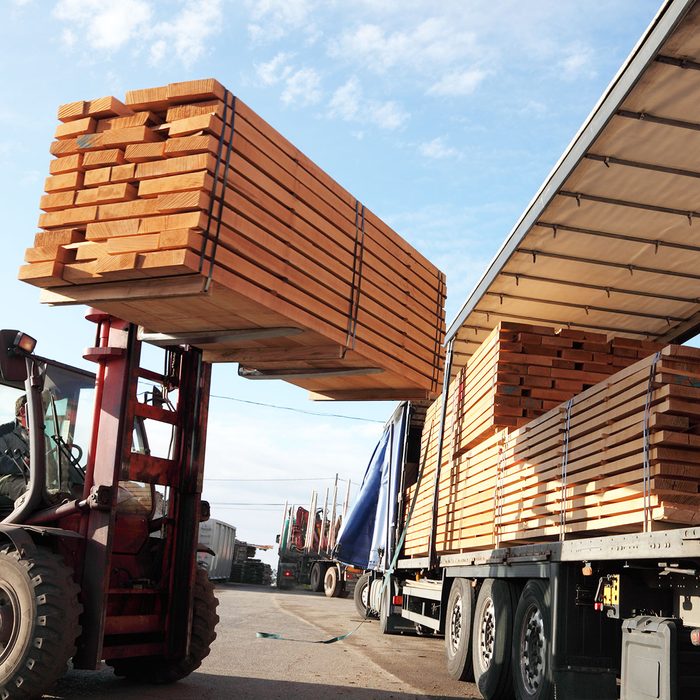Lumber Prices Fell 67% In Five Months — Here’s Why

The housing market finally seems to be going back to normal, taking pressure off lumber prices. But will it last?
Last Friday, lumber prices in the U.S. dropped below $500 per thousand board feet for the first time in nearly a year. That marked a 67 percent decrease from this year’s peak in January, when the cost climbed above $1,300 per thousand board feet.
This long-awaited decline is mainly the result of the housing market steadily returning to normal following the housing boom in the wake of the COVID-19 pandemic. In 2020 and through most of 2021, unprecedented demand for housing and sawmill closures put major pressure on the lumber supply.
Those factors drove up the price of one of housing’s most essential commodities to historic levels, with lumber reaching all-time highs of more than $1,700 per thousand board feet. Now housing demand has cooled thanks to rising mortgage rates, finally allowing the market to catch up and reset.
“We will probably be selling the same floor plans in the future for less money than we were over the last 24 months,” Eric Lipar, CEO of LGI Homes, told Market Insider. “But it’s going to be similar to what it was two years and three years ago, because the last couple years are just going to be an outlier as far as [home] pricing goes.”
As the housing market returns to pre-2020 activity levels, lumber prices are following suit — for the most part. There’s still some volatility in the market. Lumber prices have rebounded slightly since Friday, jumping 8.9 percent early this week.
This uptick should not necessarily be a cause for concern or a sign lumber prices will soar back to where they were early this spring. Before the pandemic, it was normal for lumber prices to fluctuate from $200 to $600 per thousand board feet. The hope for builders, though, is that the days of huge spikes and lumber prices of more than $1,000 per board foot are in the past.


